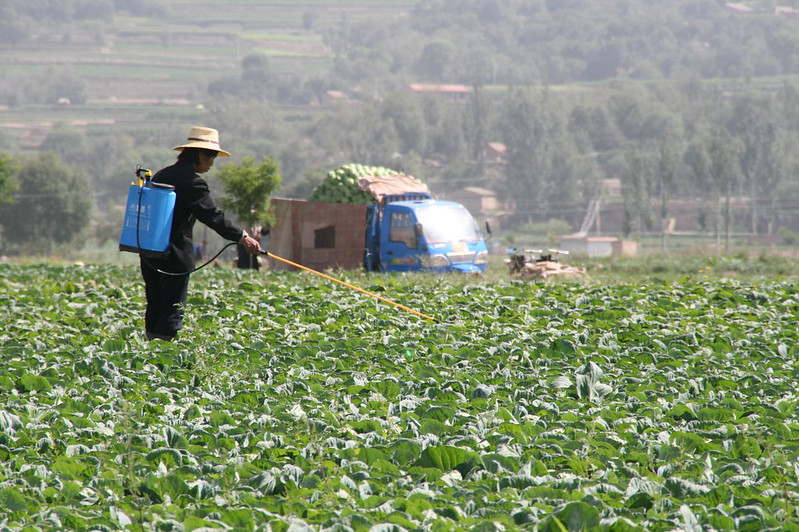Before associating yourself with pest control, you need to know what are the factors affecting pesticides activities.
Pesticides are used to control insects, weeds, rodents, bacteria, and fungi. However, many pesticides have gradually lost their efficacy due to several factors.

Is a pesticide application sufficient? Is what you’re doing correct?
It would be best to be on the lookout for and cautious about these things. Proceed to be fed by a concise but comprehensive guide to assist your pesticide activities.
Understanding The Influential Factors
1. Pest resistance
Resistant pest populations are defined as pest populations that have developed a decreased sensitivity to a pesticide, failing a correctly applied pesticide to control the pest population. When the same pesticide or similar ones with the same mode of action are used repeatedly, the development of resistance is possible.
There may be a few individuals with resistance genes in an insect population. Rare mutations give rise to these genes.
In nature, mutant insects are weaker and produce fewer offspring. Insects without resistance genes die when exposed to insecticides, allowing those with resistance genes to survive and reproduce, creating more resistant insects.
2. Formulation
Activating ingredients (AI) and inert or inactive ingredients (II) make up the two groups of chemicals in pesticides. The component of the formulation that is intended to control the target pest is referred to as the active ingredient(s).
Active ingredients benefit from inert ingredients because they aid in their application and efficacy. Pesticide formulation refers to the combination of active and inactive ingredients.
Pesticides can be applied in a variety of ways: sprays, dust, and granules, thanks to the various formulations. For these reasons, different pests require different kinds of pesticides.
3. Persistence of pesticides
Persistence is the residual time which refers to the amount of time the pesticide actually lasts. Remember, this is important due to the fact that not all the target pests can be eliminated in a single treatment.
Light, moisture, and temperature can all have an impact on the length of time a pesticide remains active.
4. The pH of the water
Low and high pH values can affect a wide range of materials. The half-life of pesticides can range from days to hours, depending on the pH of the solution used to mix pesticides.
This is especially true for organophosphate and carbamate pesticides. Be sure to check the pH of your water source on a regular basis to see if buffering agents are necessary.
Keep the spray mixture to a minimum and only prepare as much as is necessary. When pesticides are held in a tank, wettable powders may settle, and active ingredients may break down.
5. Temperature
Most pesticides work better when the temperature is hot. During the winter, it may have been too cold to get the best control.
As temperatures rise above 75 degrees, the effectiveness of material like pyrethroid drops. In fact, some growers have found that materials used in the winter and spring give reasonable control but then don’t work as well in the summer, so they don’t use them.
To understand why this might be, think about how hot it is in summer and how pyrethroids work less well as the temperature rises.
6. Spray coverage
A lack of spray coverage can also lead to ineffective pest management. Spraying thoroughly, especially under the leaves, is essential.
When dispersing spray materials, wetting agents should be used.
Management Practices
While discussing the factors affecting pesticides activities, another problem also arises as your health is also at stake in the risks of using pesticides. At the same time, sanitation will help to alleviate the situation of pest infestation.
Besides, plant pest control is a significant concern in the greenhouse environment. The best results are typically obtained when pesticides are applied in the early morning since the phytotoxic effects are reduced when the temperatures are lower.
It is more likely that pesticides will cause damage to plant tissue as the day progresses because temperatures rise throughout the day. Pesticides will also remain active on foliage for a more extended period of time in the early morning hours, allowing for more effective application.
Factors such as adequate spray coverage, proper pesticide application, water pH, and other considerations may help to improve the effectiveness of your pesticide activities. For further enlightenment, you might check this related article about the factors affecting the pest control effectivity.
Conclusion
You should now be aware of what are the factors affecting pesticide activities. Let’s take a quick look back at what we’ve discussed.
All the environmental factors, including light, temperature, moisture, and pH of water, impact the active ingredient of any pesticide that is applied. Also, the time the pesticide is available for off-target movement, pest control, and environmental contamination are all impacted by the pesticide’s breakdown rate.
Pesticide persistence and pest resistance are two other rhyming terms worth noting here. Make sure to bear all of these in mind as you use pesticides to get rid of pests.
